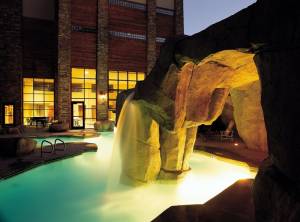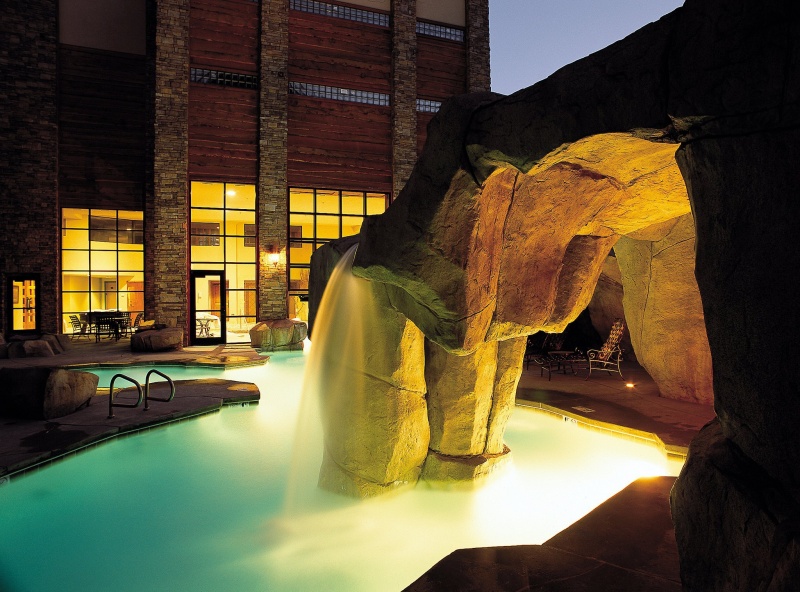Denver, CO – Despite a 15 percent decline in skier visits in the 2011-12 season as recently reported by the National Ski Areas Association (NSAA), participating lodging properties at 16 western U.S. mountain destinations sampled by the Mountain Travel Research Program (MTRiP) experienced only a 2.8 percent decrease in actual occupancy for the season while the Average Daily Rate (ADR) was up an aggregated 4.8 percent. In striking contrast, summer bookings are trending up strongly with on-the-books occupancy for May through October up 15.3 percent compared to the same time last year with increased reservation activity in all six months. Currently, the most dramatic increase in summer on-the-books occupancy is for August arrivals with an 18.9 percent increase as of April 30.
“We saw a complete flip-flop this winter season from the past two years when resorts operated with excellent snow conditions but a struggling economy while this year, resorts were boosted by an improving economy but less enticing snow conditions,” explained Ralf Garrison, director of MTRiP. “As a result, visits by day skiers and riders were weaker this year while the destination visitors carried the season through the tough conditions. Resorts with strong national and international brands and a rich diversity of off-slope activities and attractions clearly fared the best.”

The monthly report also includes an assessment of major economic indicators that may impact mountain travel. Pegged as positive news for the mountain travel industry was the slight 0.01 percent increase in the Dow Jones Industrial Average — primarily because it represents the seventh consecutive monthly increase, and its position as of April 30 was 3.1 percent higher than the same time last year. A tiny 0.1 percent dip in the Unemployment Rate to 8.1 was also cited as a positive indicator for improving public perception of continued declines.
Several indicators are cited as potential concerns for tourist destinations. First, the Consumer Confidence Index dropped to 69.2 points, the second consecutive monthly decline although it is higher than at the same time last year. Second, the Travel Price Index moved up an additional 2.8 percent for the month driven primarily by increases in fuel prices although rising room rates also played a role. And the final increase of potential concern is the 0.7 percent rise in the Consumer Price Index led by fuel, food, apparel and medical costs.
“Despite the more downbeat economic environment, MTRiP found lodging property behavior to have changed from prior years,” says Tom Foley, director of operations for MTRiP. “Although the past winter created weather- related challenges for destinations, it is clear that the lessons of the ‘Great Recession’ of the past few years have been taken to heart as lodging properties became more nimble in adapting to changing circumstances and adding value to their guest’s experience instead of simply slashing prices.”
This month’s data closes the books on the 2011-12 ski season and MTRiP now turns it’s focus on summer bookings and trends.
“It was a challenging winter and one that most destinations are glad to put behind them but they are encouraged by the strong positive momentum from last summer carrying into this summer,” observed Garrison. “But resorts must remember that the two wild cards for mountain travel in the winter—the economy and the weather—can also be in play during the summer months so nothing should be taken for granted,” he cautions.
Despite a 15 percent decline in skier visits in the 2011-12 season as recently reported by the National Ski Areas Association (NSAA), participating lodging properties at 16 western mountain destinations experienced only a 2.8 percent decrease in actual occupancy for the season while the Average Daily Rate (ADR) was up an aggregated 4.8 percent according to the most recent data distributed by the Mountain Travel Research Program (MTRiP).* In striking contrast, summer bookings are trending up strongly with on-the-books occupancy for May through October up 15.3 percent compared to the same time last year with increased reservation activity in all six months. Currently, the most dramatic increase in summer on-the-books occupancy is for August arrivals with an 18.9 percent increase as of April 30.
“We saw a complete flip-flop this winter season from the past two years when resorts operated with excellent snow conditions but a struggling economy while this year, resorts were boosted by an improving economy but less enticing snow conditions,” explained Ralf Garrison, director of MTRiP. “As a result, visits by day skiers and riders were weaker this year while the destination visitors carried the season through the tough conditions. Resorts with strong national and international brands and a rich diversity of off-slope activities and attractions clearly fared the best,” he added.
The monthly report also includes an assessment of major economic indicators that may impact mountain travel. Pegged as positive news for the mountain travel industry was the slight 0.01 percent increase in the Dow Jones Industrial Average–primarily because it represents the seventh consecutive monthly increase, and its position as of April 30 was 3.1 percent higher than the same time last year. A tiny 0.1 percent dip in the Unemployment Rate to 8.1 was also cited as a positive indicator for improving public perception of continued declines.
Several indicators are cited as potential concerns for tourist destinations. First, the Consumer Confidence Index dropped to 69.2 points, the second consecutive monthly decline although it is higher than at the same time last year. Second, the Travel Price Index moved up an additional 2.8 percent for the month driven primarily by increases in fuel prices although rising room rates also played a role. And the final increase of potential concern is the 0.7 percent rise in the Consumer Price Index led by fuel, food, apparel and medical costs.
“Despite the more downbeat economic environment, MTRiP found lodging property behavior to have changed from prior years,” says Tom Foley, director of operations for MTRiP. “Although the past winter created weather- related challenges for destinations, it is clear that the lessons of the ‘Great Recession’ of the past few years have been taken to heart as lodging properties became more nimble in adapting to changing circumstances and adding value to their guest’s experience instead of simply slashing prices,” he added.
This month’s data closes the books on the 2011-12 ski season and MTRiP now turns it’s focus on summer bookings and trends.
“It was a challenging winter and one that most destinations are glad to put behind them but they are encouraged by the strong positive momentum from last summer carrying into this summer,” observed Garrison. But resorts must remember that the two wild cards for mountain travel in the winter—the economy and the weather—can also be in play during the summer months so nothing should be taken for granted,” he cautions.

